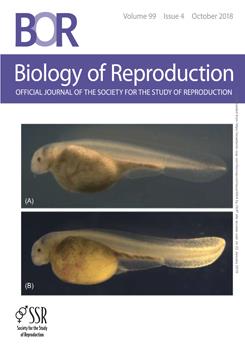Despite the major negative impact uterine fibroids (UFs) have on female reproductive health, little is known about early events that initiate development of these tumors. Somatic fibroid-causing mutations in mediator complex subunit 12 (MED12), the most frequent genetic alterations in UFs (up to 85% of tumors), are implicated in transforming normal myometrial stem cells (MSCs) into tumor-forming cells, though the underlying mechanism(s) leading to these mutations remains unknown. It is well accepted that defective DNA repair increases the risk of acquiring tumor-driving mutations, though defects in DNA repair have not been explored in UF tumorigenesis. In the Eker rat UF model, a germline mutation in the Tsc2 tumor suppressor gene predisposes to UFs, which arise due to “second hits” in the normal allele of this gene. Risk for developing these tumors is significantly increased by early-life exposure to endocrine-disrupting chemicals (EDCs), suggesting increased UF penetrance is modulated by early drivers for these tumors. We analyzed DNA repair capacity using analyses of related gene and protein expression and DNA repair function in MSCs from adult rats exposed during uterine development to the model EDC diethylstilbestrol. Adult MSCs isolated from developmentally exposed rats demonstrated decreased DNA end-joining ability, higher levels of DNA damage, and impaired ability to repair DNA double-strand breaks relative to MSCs from age-matched, vehicle-exposed rats. These data suggest that early-life developmental EDC exposure alters these MSCs' ability to repair and reverse DNA damage, providing a driver for acquisition of mutations that may promote the development of these tumors in adult life.
Summary Sentence
Effects of perinatal endocrine disruptor-exposure on DNA repair of adult rat myometrial stem cells(MSCs) were examined. MSCs from exposed animals showed increased DNA damage and diminished DNA repair.





